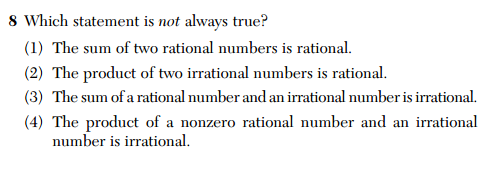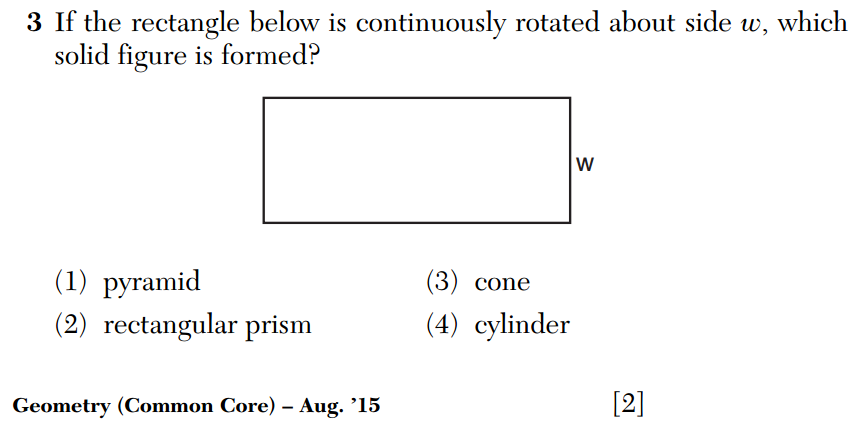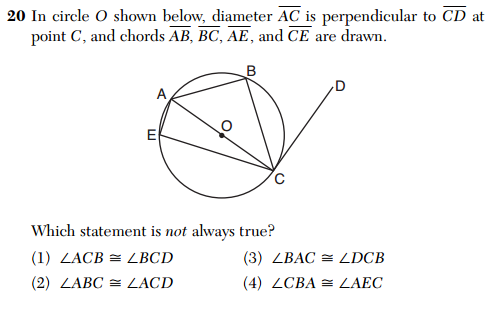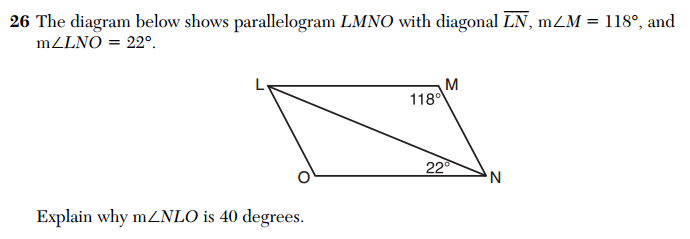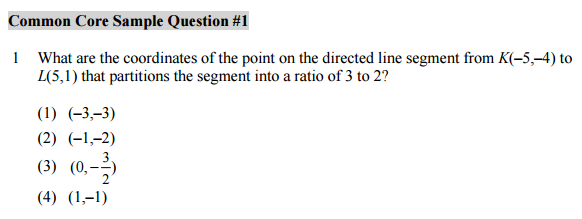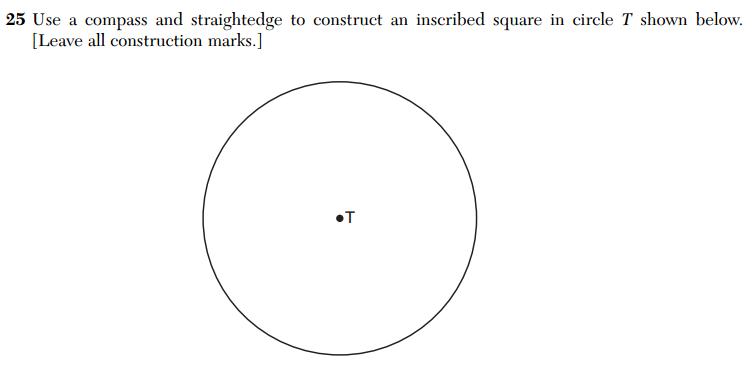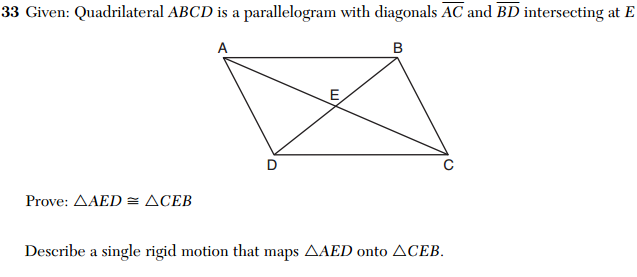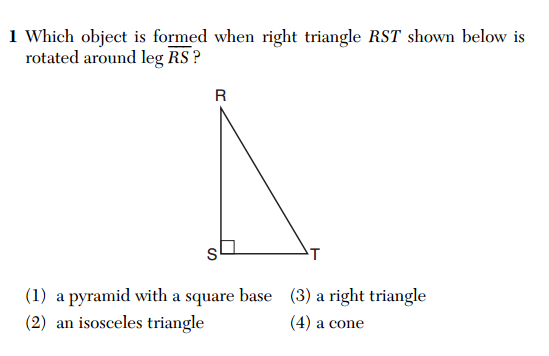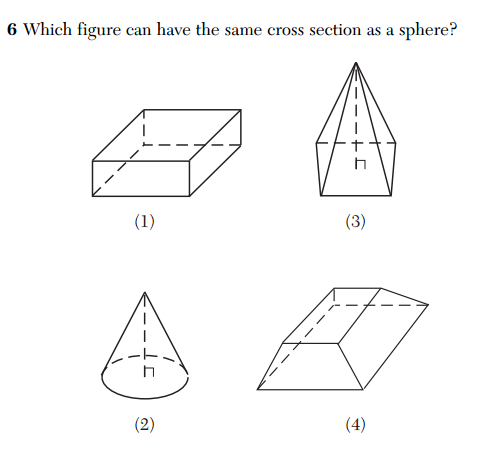Here is another installment in my series reviewing the NY State Regents exams in mathematics.
I have been reviewing New York State Math Regents exams for several years now, and I occasionally wonder if anyone involved in the production of the exams pays attention to what I say.
Earlier this year I wrote about a terrible question asking students to justify why the sum of a rational number and an irrational number is irrational. (Answer: because the sum of a rational number and an irrational number is always irrational.)
So I was pleasantly surprised to see this question in the June 2015 Common Core Algebra exam.
This multiple choice question assesses the same concept, but doesn’t ask the student to write a circular explanation as justification. The less these tests ask students to do mathematically meaningless things, the better.
I also had serious complaints about how certain 3D geometry concepts were handled on the June, 2015 Common Core Geometry exam. In particular, a solid of revolution problem was very poorly stated. This question from the August, 2015 Common Core Geometry Regents exam shows some improvement.
It’s also true that recent locus questions have not suffered from the imprecise language I complained about some time ago: in the last few iterations, problems have been more carefully worded to ask students explicitly to sketch individual loci and then indicate their intersection.
In the vastness of these flawed tests, it’s nice to occasionally see some progress.
